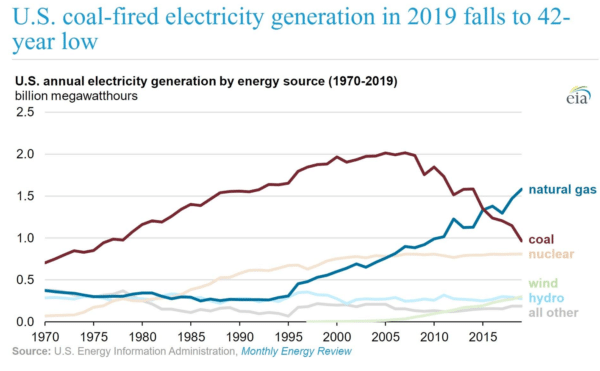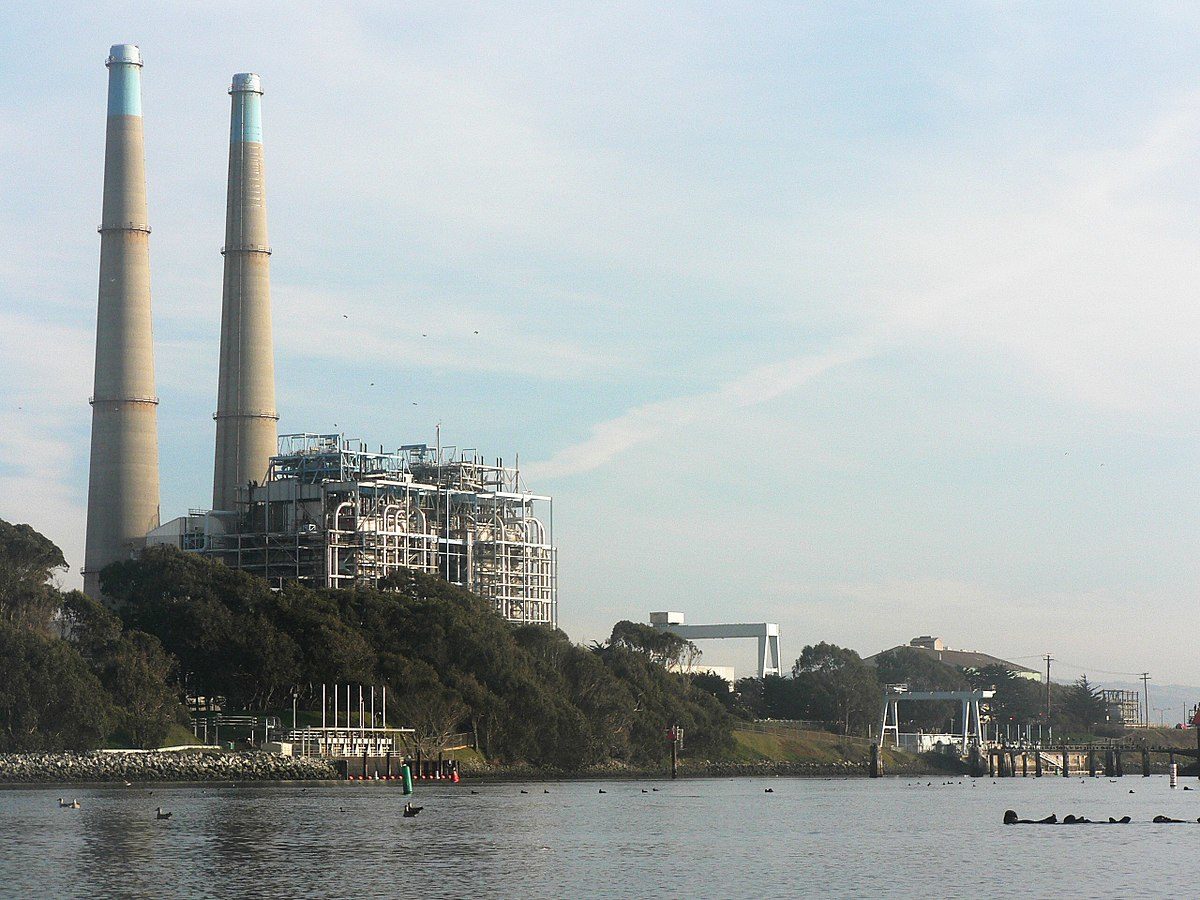We’ve reached a massive milestone in the global energy transition — the ability, right now, of renewable energy sources and energy storage to match or beat the price of power from natural gas-fired peaker plants and coal-fired generators.
The problem is that energy markets are not exactly free markets — and replacement of existing generation is not entirely tied to price. There are artificial regulatory constructs and financial structures built into energy markets which can favor certain parties (utilities) and fuels (legacy coal, gas and nuclear).
So, victory in the economic realm (increasingly the case with solar, solar-plus-storage and wind) is no guarantee of market victory if the regulations are stacked against renewables.
In addition to regulatory bias against renewables, one of the massive challenges of the energy transition is the need to equitably retire thousands of existing and planned fossil-fuel plants.
The fall of U.S. coal
About 85 GW of U.S. coal capacity has been shuttered since peak coal in 2007 — and the retirements have not slowed, even under a coal-sympathetic Trump regime. Actually, the pace seems to have quickened — with 31 GW of coal power retired since the beginning of 2018.

U.S. coal power generation fell by a dramatic 30% in the first six months of 2020, according to the U.S. Energy Information Administration (EIA).
While electricity from renewables grew 5% in the first half, the real beneficiary of coal’s fall was natural-gas generation which grew by 9% in the continental U.S. in the half, according to EIA. Natural gas gained a record share of the U.S. electricity energy mix in July of this year.
EIA said that coal plants are simply “uneconomical in most regions,” because of low-cost renewables, plummeting Henry Hub natural-gas spot prices and investors intently putting their money elsewhere. Nevertheless, about 236 GW of coal capacity is still active in the U.S. according to the Rocky Mountain Institute.
Outcompeting gas out West
The withering of the U.S. coal industry has an air of inevitability, whereas the existing (and planned) U.S. natural gas fleet will be a persistent part of the energy mix for decades.
Still, interconnection queue data, especially in the West, show new solar-plus-storage projects outcompeting gas plants. California’s interconnection queue included 29 GW of proposed solar-plus-storage plants as of year-end 2019, while Western utilities’ queues had another 33 GW. Yet planned gas units totaled only 0.2 GW in California’s queue and 4 GW in Western utilities’ queues. (data from Lawrence Berkeley National Laboratory report “Hybrid power plants: Status of installed and proposed projects”)
While the majority of plants proposed in interconnection queues are not subsequently built, a Western trend favoring solar-plus-storage over gas units is obvious. The Midwest shows signs of a similar trend, as the region’s interconnection queues (ERCOT, MISO and SPP) had 21 GW of proposed solar-plus-storage plants at year-end 2019, well above the 13 GW of proposed gas units. Gas is still favored in the East, as Eastern queues had 59 GW of proposed gas units at year-end 2019 and only 13 GW of proposed solar-plus-storage plants.
An additional finding: solar-plus-storage has 99.8% of the capacity value of a theoretical “perfect generator” in California’s CAISO grid region, according to a study commissioned by California’s three major utilities — easily matching gas.
Financially and socially equitable transition
Retiring the uneconomic coal units among the nation’s 236 GW of coal capacity (that’s most of them), and replacing them with solar, wind and storage, would yield savings of $10 billion per year, according to a report (How to Retire Early: Making Accelerated Coal Phaseout Feasible and Just from the Rocky Mountain Institute and Sierra Club.) Retiring all of them now, including units that are not yet uneconomic, would still save $9 billion per year.
But U.S. utilities cannot strand the assets of more than 1,000 peaker units and 236 GW of coal capacity without a different regulatory and financial structure.
The authors of the report recommend federal involvement in financing this transition, and using the savings not only to lower customers’ electric bills but to fund transition assistance and retraining for affected workers and communities. The authors recommend a federal program of loans or loan guarantees to refinance uneconomic coal plants, enabling plant owners to recoup their investment as they shift to renewables.
Some measure of systemic environmental racism can be reversed by replacing high-emission peaker plants, which tend to be located in areas with large proportions of minority and low-income residents, with energy storage.
Bias toward gas
“Many utilities are in a rush to acquire new natural gas-fired capacity, and clinging onto coal-fired generation” according to a report from policy shop, Energy Innovation.
After examining ten utility procurements, they found “utility preferences for gas-fueled generation” that “may be at odds with economics, but are not surprising.”
Utilities owned and operated about 1,900 gas units as of 2018, the authors found, and utilities’ preference for gas-fueled plants may be related to biases towards over-procurement of capacity and self-built generation, and “an organizational culture and rate design that favor gas-fueled generation.”
Also, “while utilities have generally acknowledged the value of grid services,” they said, “those values may not be recognized for new technologies in the same way that they are taken for granted from gas-fueled generation.”
Project examples
In May, utility Southern California Edison (SCE) signed seven contracts for a total of 770 MW of lithium-ion battery-based energy storage — to replace four large coastal once-through cooling plants. The award recipients are Southern Power, NextEra and TerraGen.
It’s one of the nation’s largest energy storage procurements and an indication of utility acceptance of massive-scale solar-plus-battery storage as a replacement for fossil fuel generation. Late last year, the California Public Utilities Commission (CPUC) urged California’s power providers and community choice aggregators to procure 3.3 GW of storage and PV-plus-storage systems to solve grid congestion and to compensate for gas and coal plant retirements.
Remarkably, SCE wants these energy storage resources online by August 2021, an aggressive timeline unthinkable for any type of fossil fuel project of this size.
Most of the winning storage projects are co-located with nearby solar power plants to charge the battery over the term of the contract, help integrate renewable energy into the grid, and furnish resource adequacy during peak demand.
An expansion of another enormous storage project in California was approved in August that could bring the Vistra Energy-backed battery for the PG&E-backed Elkhorn Battery Storage Facility in Moss Landing to a spectacularly sized 1,500 MW/6,000 MWh.
The battery modules are substituting for natural gas and with some poetic justice, are situated within an old power plant turbine building.
In an era of plunging battery and PV costs, these awards point to the dawn of dispatchable solar and wind as cheaper and cleaner than coal and gas.
Last word
Leah Stokes, a professor in the Department of Environmental Studies at UC Santa Barbara told pv magazine, “If you’re not building the future, you’re continuing to invest in old technology. And, that will have a cost at some point when you use billions to invest in coal plants, instead of building new wind, solar and storage that would create longer life value.”
This content is protected by copyright and may not be reused. If you want to cooperate with us and would like to reuse some of our content, please contact: editors@pv-magazine.com.








Utilities should also plan for the huge storage options available in the near future. EV versions of car/truck rentals, city utility vehicles, school buses (off season), etc, could offer additional storage—and a 2nd income source for fleet owners.
This would give versatility to the grid and a 2nd use for grid tied EVs. Vehicle software could be configured to adjust the amount of battery drain allowed (going TO the grid) per vehicle. Thus the owner(s) could maximize or minimize the amount of power/storage provided—depending on the vehicles planned future use. Also an excellent resource for natural disasters, blackouts, etc.
Studies show that much less storage is needed if there is a good HVDC transmission overlay grid. That between Texas and North Dakota there is nearly always someplace with strong winds.
Also, much can be done to reduce peak usage. Hawaii is using smart hot water heater thermostats to overheat when enough electricity, use a mixing valve to keep constant temp at faucets and avoid heating during peak usage periods.
I am not sure how the EIA calculated their 9% gain for NG. Using their numbers from the just released Electric Power Monthly report my spreadsheet calculates a 5.77% for NG electric generation in 1H2020. This compares with an 8.06% gain for RE. But, we know that NG is starting from a MUCH bigger capacity and generation. In absolute TWh NG produced 40.87TWh in 1H2020 where RE produced 32.25TWh. NG was, of course, still the big winner. But considering generation capacity NG has 481.4GW of generating capacity and RE has 247.9 it seems that RE was definitely generating above it’s class. Coal had a massive decrease of 145.9TWh. Most of this demand destruction brought about by COVID.
Solar accounted for an increase of 12.5TWh which is a 23.7% increase. Again, not too shabby.
And, it is crappy that utilities continue to build NG plants that we know are going to be stranded assets. And is even worse that the state PUCs allow this to happen. From the utility perspective they get paid to build the asset plus a nice profit even if they are wrong. What other business is allowed this kind of socialism?
I forgot to add – the U.S. currently has 222.4GW of coal capacity. There have been 5.655GW of retirements through September with another 3.1GW still scheduled to retire.
Unfortunately, 2021 only has 2.7GW of coal scheduled to retire – hopefully the lack of demand will enhance that. 2022 has 8.5GW of retirements scheduled and 2023 has another 5.3GW.
My utility charges more for electricity to charge EV cars dsurring daylight hours and charge less from 1:00 AM to 9:00 AM when there is no solar generation. I guess they plan on using the natural Gas Plants at night to charge up all the cars, busses abd trucks for the next days use. Better not retire them yet.
40% of US electric power comes from nuclear and renewables other than solar, primarily hydro and wind. Electric demand is typically about half as much at night vs day. So there are enough other sources to supply power at night besides NG. Utility solar is about 2% of the total. That doesn’t include home and business that generate power “behind the meter”.
As the article notes, battery storage is now being added in places where wind and solar are large contributors.